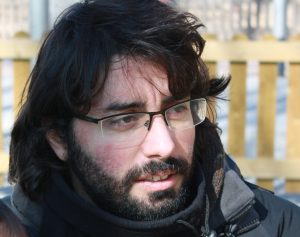“Olfaction – the complex sense”
16/17 July 2019 at CNS*2019 Barcelona
Abstract
Olfaction could be called ‘the complex sense’. It has no well-defined organising property analogous to the wavelength of light in vision or the pitch of sounds in audition. While the properties of the stimuli in other sensory modalities can be tightly measured and controlled, we still do not even know the relevant time scales of olfactory stimuli, nor the speed of the olfactory system. To map the complex olfactory stimulus space to unique and reliable neuronal responses, the
olfactory system has to be a complex machine, yet even tiny insects with relatively simple neural systems can solve very complex olfactory tasks [1]. While we have 3 types of visual receptors, Drosophila has more than 50 olfactory receptor types and rats have more than 1000, fuelling fierce debates on the dimensionality of the odour space [2].
The goal of computational/theoretical research in olfaction is to formulate a theory that captures the fundamental mechanisms behind this ‘complex sense’ without needing to know all the details of how the olfactory system is implemented in particular species [3]. However, we do not yet understand the olfactory system well enough to know which details are critical and which are insignificant [1]. Any model of a highly complex system risks being useless if one tries to include too many details and it therefore becomes under-constrained. This is an extremely common problem in Computational Neuroscience and, in this workshop, we will examine it in the light of the latest experimental results in olfaction.
References
1. Slankster et al., (2019) Strength in diversity: functional diversity among olfactory neurons of the same type, Journal of bioenergetics and biomembranes
2. Meister, (2015) On the dimensionality of odor space, eLife; Bushdid et al. (2014) Humans can discriminate more than 1 trillion olfactory stimuli, Science
3. Abbott (2008) Theoretical neuroscience rising, Neuron
Tuesday 16 July, 09.30 – 13.10:
Mario Pannunzi, “Odor stimuli: not just chemical identity”, University of Sussex
Mark Stopfer, “Modeling a giant neuron that shapes neural codes for odors”, NIH
Maxim Bazhenov, “Adaptive neural dynamics for detecting salient features of olfactory stimuli”, University of California, San Diego
Brian Smith, “Novelty detection in early olfactory processing”, Arizona State University
Wednesday 17 July, 09.30 – 13.10:
James Bennett, “Plasticity at recurrent inhibitory synapses outperforms alternative sparse coding mechanisms in a model of the Drosophila mushroom body”, University of Sussex
Aurel Lazar, “Predictive Coding in the Drosophila Antennal Lobe”, Columbia University
Martin Nawrot, “Transfer learning for predicting sensory evidence in the insect mushroom body”, Universität Köln
Alex Koulakov, “Neural networks that sample the space of molecules”, Cold Spring Harbor Laboratory
